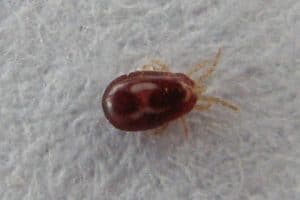Birds instinctive hide any illness or injury from the world around them and this can mean being a finch owner can often meaning being something of a detective. You need to be able to notice changes in their behaviour or physical condition that may indicate something is wrong. And sometimes there is nothing you can do – by the time they show signs of an illness, they are virtually dead so learning to accept this is a sad but necessary part of keeping these birds.
Here are a few of the most common finch health problems to help you spot a problem where possible.
Deficiencies
The most common deficiencies in finches is a calcium deficiency and this is most common in female birds. This is because they use the store of calcium in their bodies to make the shell of their eggs and if they cannot replenish this, face a serious problem.
There are various ways that calcium can be offered to finches to help them replenish themselves naturally with grit, cuttlefish and the shells from chicken eggs being the most popular. When using chicken eggshells, make sure that you use the shells from boiled eggs as this reduces the chance of any bacteria travelling on the shell.
Liquid calcium is another great way to top up their levels as it can be added to their drinking water and they don’t notice it, as it is colourless.
Calcium deficiency is also tied up with egg binding, when the female tries to lay an egg but cannot. There are a number of reasons why this happens, including that the shell of the egg isn’t strong enough and the bird cannot push it out through her vent. Being egg bound can be fatal if the egg cannot be dislodged and handling a bird that may be egg bound needs to be done very careful as if it cracks inside, it can be fatal also.
Infections
Aspergillosis is a serious infection cause by mould and creates respiratory distress that can be fatal if not treated straight away. Birds will be gasping, wheezing or breathing heavily if they are infected and you may notice a chance in their voice or song. If you think your bird may have this or any other condition, get straight in touch with an avian vet who will give you medication. Also, try to root out the cause of the problem – usually a wet spot in the cage or aviary where the mould can grow.
Bumblefoot is the common name for an infection that appears on the bottom of a finch’s foot. The infection causes the skin to become inflamed and red then often scabs over. It can also be brought on by a lack of activity and obesity, often when birds are kept in too small an enclosure and don’t get enough exercises. Regularly disinfecting of perches can help stop the infection.
Coccidiosis is caused by a parasite that gets into the digestive tract of the bird and causes an infection. It can then spread to other birds via infected droppings so can quickly infect a whole aviary. There are special treatments for it to help clear the infection and restore the birds to health.
Mites
Mites are the enemy of bird keeper and sometimes despite your every effort, the little beggars get in. Mites can live on the face and body as well as the airways and feed on the bird’s blood. Air sac mites live just in the airways and if untreated, can completely block the airways. Symptoms include breathing with their beaks open, problems breathing and a clicking noise when the bird breathes, often only heard when they are held close to your ear.
Scaly faced miles only affect the face and cause a scaly look to the skin where they infect. Red mites are the bloodsuckers and their constant drawing of blood can weaken a bird to the point of death. Mites can also hide in the corners of cages and in nooks and crevices, so monitoring of these spots is essential. Regularly disinfecting these areas as a precaution can help stop them getting into the space.

Generally unwell
Hospital cages can just be a small cage where you can easily catch the bird but some have built-in heating so you can warm the bird up if it is cold, particularly useful for young birds. Ensure that you keep the hospital cage disinfectant after each use as some bacteria and mites can survive long periods without a host.
Remove any food and water that the sick bird has come into contact with to help stop the spread of any illness and disinfect the perches and toys that the bird has used. There are some great special avian disinfectants available that can be diluted in water and are safe to use around the birds, whereas normal human cleaning products can potentially cause more problems than they solve.
Sometimes the use of the right supplements can help to boost birds and make them more resistant to common health issues. Read more about the right use of finch health supplements here.